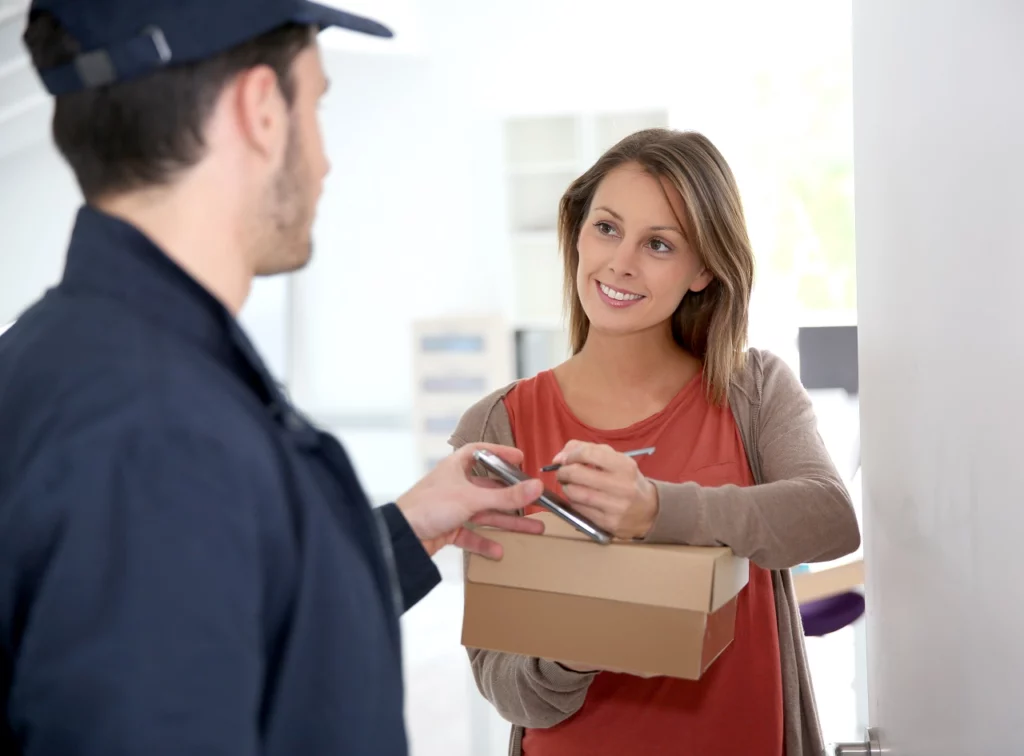31 Supply Chain Experts, Delivery Professionals & eCommerce Retailers Reveal the Most Underutilized Last-Mile KPIs

Wise Systems

Last-mile delivery is the most expensive and time-consuming leg of the supply chain journey, and it has a significant impact on customer satisfaction. For these reasons, last-mile delivery is often targeted as an area for improvement, with a focus on improving delivery times and accuracy and minimizing costs.
But you can’t manage what you don’t measure, making ongoing data collection and analysis an essential component of your last-mile optimization strategy. The metrics that you use to monitor performance and target areas for improvement are your key performance indicators (KPIs).
We’ve curated this collection of the most underutilized last-mile KPIs to gain some insight into the most valuable metrics companies should be tracking to achieve their last-mile efficiency and accuracy goals.
In this article:
- What Are Last-Mile Delivery KPIs?
- Meet Our Panel of Supply Chain Experts, Delivery Professionals & eCommerce Retailers
- The Most Underutilized Last-Mile KPIs
- Frequently Asked Questions
What Are Last-Mile Delivery KPIs?

Last-mile KPIs are metrics that companies measure and analyze to evaluate the efficiency and effectiveness of the last-mile delivery process. Last-mile delivery refers to the final leg of the supply chain, where products are transported from a transportation hub (such as a local distribution center) to their final destination—the end customer’s location.
There are numerous KPIs that are used to assess last-mile delivery performance, such as:
- On-Time Delivery Rate: The percentage of deliveries made within the promised delivery window.
- Failed Delivery Rate: The percentage of deliveries that can’t be completed on the first delivery attempt due to the customer not being home to receive the package, an incorrect delivery address, or other problems.
- Average Service Time: This metric refers to the amount of time the last-mile delivery process takes on average, from the moment a product is picked up at a distribution center to its arrival on the customer’s doorstep.
- Order Accuracy: The percentage of orders delivered successfully without errors. Errors can include delivering the wrong item, delivering the wrong quantity of items, and goods that have become damaged during shipping.
- Cost Per Mile: The total amount it costs to run a delivery operation per mile traveled by delivery personnel. This is a key metric given that last-mile delivery is the costliest leg of the supply chain.
- Cost Per Package: Similar to cost per mile, cost per package is an important metric to track for managing last-mile costs. Rather than costs per mile traveled, cost per package measures the average cost of delivering a single package.
- Customer Satisfaction: Last-mile delivery has a significant impact on customer satisfaction, making this a crucial metric to track. Poor customer satisfaction can indicate a need to dig deeper into other KPIs to identify shortcomings and improve performance.
These are just a few of the metrics commonly used by last-mile delivery operations to assess costs and performance. To gain some insight into lesser-known and underutilized metrics that your company might be overlooking, we reached out to a panel of supply chain experts, delivery professionals, and eCommerce retailers and asked them to answer this question:
“What’s the most underutilized last-mile KPI?”
Meet Our Panel of Supply Chain Experts, Delivery Professionals & eCommerce Retailers:
The Most Underutilized Last-Mile KPIs
Keep reading to learn what our panel had to say about the most underutilized last-mile KPIs and how to make use of these metrics to improve performance.
 Wayne Mills
Wayne Mills
Wayne Mills is the Head of Operations at Seven Seas Worldwide. As the country’s leading international shipping company, they help over 40,000 people transport personal effects safely, catering to holidaymakers, expats, students, and work travelers.
“Environmental Impact Assessment is one last mile Key Performance Indicator (KPI) that is commonly underutilized…”
This KPI assesses last-mile logistics operations’ environmental sustainability and carbon footprint. Many businesses prioritize cost-cutting and efficiency improvement over environmental impact.
Reducing the environmental impact of last-mile deliveries by using eco-friendly trucks, optimizing delivery routes, and implementing sustainable packaging can have a positive influence not just on the environment but also on a company’s reputation and long-term sustainability.
Incorporating this KPI into a logistics strategy not only helps businesses meet legal obligations and future-proof their operations against more onerous environmental standards, but it also coincides with the growing eco-conscious customer needs.
 Shaun O’Brien
Shaun O’Brien
Shaun O’Brien draws from over 20 years of retail experience working for some of the largest and most respected retail chains within Australia and New Zealand, including over 5 years as a retail manager. In 2002, while still working full time, Shaun started his first online trading business selling HDMI Cables, Selby Acoustics.
“One notable observation from the ever-evolving world of logistics is…”
The deeper the modern market’s reliance on the convenience of online shopping, the more emphasis is placed on customer satisfaction.
To stay ahead of the fiercely competitive landscape of eCommerce, businesses tend to overemphasize meeting customer demands and expectations because it can simultaneously fuel the enhancement of multiple other aspects, like sales and marketing. This is why, even in measuring last-mile performance, many heavily depend on utilizing customer feedback and ratings as primary insights for verifying their delivery efficacy.
The logic becomes, ‘Nothing is an issue unless it concerns the consumer.’ Inadvertently, this can result in other last-mile metrics, particularly average service times, being overlooked. This is because the average service times KPI looks at aspects of the delivery journey that don’t directly deal with the customer, such as inefficient routing, traffic congestion, or delays in loading and unloading goods.
While customer experience with deliveries is a vital insight, an underutilization of data for average service times can hinder proper identification and amelioration of bottlenecks in the delivery process.
Ignoring this data can lead to a loss of opportunities to streamline logistical operations and refine the last-mile delivery process for optimal efficiency. This ultimately prevents an eCommerce business from obtaining an objective picture of its delivery performance and overall logistical operations, which could lead to service quality degradation, impacting overall customer satisfaction levels in the process.
 Tom Humble
Tom Humble
As the CXO and founder of ECD Automotive Design, Tom leads a global logistics operation that includes last-mile delivery for high-end custom vehicles.
“The two most underutilized key performance indicators (KPIs) in the last-mile delivery process are…”
Delivery Density and First Attempt Delivery Success.
Delivery Density
Delivery Density is the ratio of deliveries made to the miles traveled. While most companies prioritize delivery speed and on-time performance, they often overlook the significance of route optimization.
By focusing on delivery density, companies can reduce time on the road, resulting in decreased fuel costs, vehicle wear, and carbon footprint.
ECD Automotive Design, for example, consolidates deliveries by distributing multiple vehicles in the same region instead of sending them separately. This approach streamlines their last-mile logistics and generates substantial fuel and cost savings.
Adapting this strategy to other industries can optimize routes and maximize the efficiency of last-mile delivery operations.
First Attempt Delivery Success
Another underappreciated KPI is First Attempt Delivery Success. Many companies primarily track final delivery success, disregarding the impact of failed first attempts. However, failed first attempts incur additional costs in terms of labor, fuel, and customer trust.
Tracking and improving the rate of First Attempt Delivery Success can significantly reduce unnecessary expenses. It requires careful planning, effective communication, and real-time updates between delivery personnel and customers.
Identifying the reasons for failed attempts and implementing corrective measures can enhance overall delivery efficiency and customer satisfaction.
Broad Applicability
While the context of ECD Automotive Design may differ from eCommerce retailers and other delivery professionals, the benefits of these KPIs extend to various industries. By focusing on Delivery Density and First Attempt Delivery Success, companies can optimize their last-mile delivery processes, resulting in cost savings, reduced environmental impact, and improved customer experiences.
 Lily Li
Lily Li
Lily Li is the Customer Service Manager at Suproto, a top-quality CNC machining service provider in Guangdong, China.
“Customer communication is an often-overlooked metric in last-mile delivery…”
In January 2021, we were working on a big order for TechGiant Corp. Our logistics partner, FastTrack Logistics, encountered a truck breakdown, delaying the delivery by a day.
However, nobody informed TechGiant Corp about this hiccup. When the delivery arrived late, TechGiant Corp was upset, not just because of the delay, but mainly because they were not informed. This real incident made us realize that communication with customers during the last mile is crucial.
New Steps: The Simple Change
After the incident with TechGiant Corp, I scheduled a meeting with my team and our logistics partner, FastTrack Logistics. We saw the need for better communication with our customers.
The idea was to send text updates about the delivery status. We chose a text service called TextMeUp for this job, and we tested this new text update system on a small number of orders for a month.
My team members made sure the texts were sent out right, collected feedback from customers, and maintained good communication with FastTrack Logistics. The test went well. Customers liked getting updates on their delivery.
Positive Outcomes: The Noticeable Shift
Over the next six months, the change was clear. Our complaint rates dropped by 20%.
We also started receiving positive feedback. Customers appreciated being informed about their deliveries.
Our customer satisfaction scores saw a significant jump. In conclusion, keeping customers informed is a simple but powerful step to improve last-mile delivery.
 Niall John Lynchehaun
Niall John Lynchehaun
Niall is the owner and director at Midland Stone, a leading supplier of natural stone products with a long-established and trusted reputation within the stone industry for reliability, expertise, and exceptional customer service.
“In optimizing my last-mile delivery, we stumbled upon a seemingly mundane KPI…”
Delivery Window Accuracy (DWA).
By fine-tuning this metric, I not only enhanced customer satisfaction but also managed to optimize operational costs. DWA measures the precision with which your deliveries align with the promised time slots. Even though the ubiquitous speed metrics usually overshadow it, DWA can have a massive impact on customer experience.
After all, the window within which a customer expects a delivery is crucial. High DWA ensures that products arrive when expected, increasing customer satisfaction and encouraging loyalty.
 David Cohen
David Cohen
David Cohen is the CEO of Love Rose. They’re one of the UK’s largest online flower delivery services, with several central London shops open 24/7.
“One of the most underutilized last-mile Key Performance Indicators (KPIs) in eCommerce is…”
The Delivery Experience Score (DES). This metric goes beyond the traditional tracking of delivery times and looks at the holistic customer experience during the final leg of the delivery journey.
DES considers factors such as delivery person behavior, package condition upon arrival, and communication throughout the process. Many businesses focus primarily on speed and cost, but neglecting the delivery experience can lead to missed opportunities for customer satisfaction and loyalty.
For instance, at Love Rose, we’ve seen remarkable improvements in customer retention and positive reviews by implementing a DES system. By training our delivery personnel to be courteous and proactive in addressing any issues, we’ve created a more favorable impression with our customers. This has not only reduced the rate of return requests but has also resulted in repeat business and positive word-of-mouth recommendations.
In today’s competitive eCommerce landscape, prioritizing the delivery experience through the DES KPI can set businesses apart and enhance their reputation for reliability and customer care.
 Matt Dehdar
Matt Dehdar
As the professional Maintenance & Engineering Project Manager at Regency Fire, Matt brings a wealth of experience in managing maintenance and technical aspects of fireplace installation. His dynamic and results-driven approach, combined with my passion for continuous improvement, makes him a proven leader in the home appliance and fireplace industry.
“Last-mile KPIs are useful indicators that can show a company how, in the final part of the delivery leg, their resources are being used…”
I would say that one of the most underutilized last-mile KPIs is tracking service times.
A service time refers to how much time it takes for a driver to complete a certain number of deliveries in a given time frame. Service times that are poor indicate that there are issues with routes, locations, and loading and unloading which can be caused by a number of uncontrollable factors such as traffic and weather.
Without tracking service times, a company won’t know whether there are ways to make service times more efficient, thus keeping an employee’s day stable and a customer’s delivery enjoyable.
Not only does analyzing service times promote efficiency, but a company can also experiment with different routes and delivery quantities to see what works best in a given area. A company may find that summer routes don’t work in the winter, and they can adjust accordingly. It saves time and money which is valuable to a company’s bottom line.
 Dominique B Dupuis
Dominique B Dupuis
Dominique B Dupuis is the Owner of URAD.
“As an eCommerce business owner, I have found that…”
Analyzing Hours in Motion has allowed us to better understand how our vehicles are being used, how our drivers’ time is being spent, and how efficient the last-mile delivery process is in its current state.
Hours in Motion measures how much time a vehicle is spent moving and remaining idle during the day. There’s the measure of total weekly hours, then total daily hours, and then total minutes per hour, and each metric shows a different measurement of how equipment and drivers are being utilized.
For example, we found that in our busier regions such as cities, our drivers were spending most of their day in motion with very few breaks/idle time. In towns, we found that more drivers were idle than were in motion.
Since the towns were more residential, we thought about putting more drivers there, but found through this KPI that we needed to swap the number of drivers to move products and use employees’ time more efficiently.
Since making those changes, we’ve improved our Hours in Motion, making them more balanced across given areas. The process doesn’t stop there though. We are always checking in and seeing how these metrics are looking to determine if we need to tweak and make adjustments.
 Brian Lim
Brian Lim
Brandon Chopp is the CEO of iHeartRaves. They’re curators of all-over print clothing and world leaders in festival fashion.
“In the fast-paced eCommerce landscape, most companies have been laser-focused on efficiency metrics like speed, accuracy, and cost…”
And while these are undeniably essential, they often overshadow a more intangible, yet profoundly impactful metric: how the customer feels during that last crucial step—the delivery.
Incorporating the Customer Experience (CX) into the last-mile KPIs means measuring things like the clarity and frequency of delivery updates, the politeness and professionalism of the delivery personnel, and even the ease with which customers can reschedule or reroute a delivery.
By tuning into these aspects, we’re not just ensuring a package gets from A to B. We’re also ensuring that our customers feel valued, informed, and in control every step of the way.
In the long run, a positive delivery experience can enhance brand loyalty, encourage repeat purchases, and lead to positive word-of-mouth, factors that can directly impact our bottom line.
So, while efficiency metrics remain at the core of every operation, businesses should not underestimate the delivery-related customer experience.
 Joe Giranda
Joe Giranda
Joe Giranda is the Director of Sales & Marketing for CFR Classic, specializing in international car shipping and relocation.
“Among the most underutilized last-mile KPIs, especially in the area of logistics, is…”
The Delivery Time Variance (DTV).
DTV is the discrepancy between the predicted delivery window and the actual time the delivery took place. In simple terms, it measures how often you’re hitting (or missing) your delivery time promises. So, why is it so crucial?
- Customer Satisfaction: Customers today value transparency and punctuality. When a package is expected to arrive at 2 PM, and it does, trust is built. When there’s a wide variance, disappointment ensues. Monitoring DTV ensures you’re keeping your promises.
- Operational Efficiency: A consistent DTV, even if it’s slight, can indicate deeper operational issues. Maybe a particular route is always problematic, or perhaps a specific batch of drivers needs more training. By catching these variances, you can diagnose and address underlying problems.
- Cost Management: Delays often translate to increased costs. Whether it’s due to more time spent on the road (burning fuel and incurring wear and tear) or additional customer service interactions to address complaints, a poor DTV can signal rising costs.
 Mushfiq Sarker
Mushfiq Sarker
Mushfiq is the founder of Web Operators, a business that helps entrepreneurs manage their online businesses.
“Last-mile delivery often focuses on speed, but a massively overlooked KPI is…”
Recipient Availability Success Rate.
This metric measures how often a recipient is actually available to accept a package on the first delivery attempt. While fast deliveries thrill customers, if they’re not home to receive it, they’re stuck rearranging delivery or picking it up from a depot.
Tackling this KPI can reduce costs and enhance the customer experience. Imagine a system where real-time coordination between driver and recipient exists, using predictive analytics or even simple messaging systems, ensuring someone’s home when the package arrives. Such an initiative would cut down on repeat delivery attempts, saving fuel and time while also keeping those customer satisfaction scores high.
 Diana Zheng
Diana Zheng
Diana is the Head of Marketing at Stallion Express, Leading Canada’s highest-rated eCommerce shipping company.
“I have seen the importance of focusing on…”
Customer Satisfaction Latency, which can significantly impact the success of eCommerce retailers and their last-mile strategies. Delivery speed and cost per mile are commonly tracked metrics, but it’s essential also to ensure that customers are satisfied with their delivery experience.
Customer Satisfaction Latency measures this aspect, and businesses must consider it. The Customer Satisfaction Latency metric measures how quickly customers provide feedback or rate their last-mile delivery experience after receiving their order.
This metric goes beyond delivering fast; it’s about providing an experience that leaves customers happy. A shorter latency period indicates a more involved and content customer base.
For instance, we implemented a system to collect customer feedback within 24 hours of delivery. We discovered that by addressing any issues promptly and demonstrating gratitude for positive feedback, we increased customer retention rates by 20% in just three months.
This metric directly contributed to our bottom line, demonstrating the tangible impact of focusing on Customer Satisfaction Latency. While speed and cost are undoubtedly important, businesses should recognize the power of Customer Satisfaction Latency as an underutilized last-mile KPI.
By actively measuring and improving this metric, eCommerce retailers can establish stronger customer relationships, improve brand loyalty, and drive sustainable growth.
 Albert Vaisman
Albert Vaisman
Albert Vaisman is the Marketing Manager of Honest Brand Reviews, where they review the most popular brands to help you make the best possible purchase decisions.
“One of the most overlooked measurements in the last step of delivering goods is…”
Delivery Time Variance.
It checks how much the actual delivery time differs from the promised one for each order. This helps a company see if they are consistent in the last step of delivery.
Many companies don’t pay much attention to this. However, it can reveal important issues and help improve customer satisfaction.
 Jaime Ghisays
Jaime Ghisays
Jamie is the CEO of All Print Heads.
“One of the most underutilized last-mile Key Performance Indicators (KPIs) in logistics and delivery operations is…”
First-Time Delivery Success Rate.
This metric measures the percentage of deliveries that are successful on the first attempt. A high first-time delivery success rate indicates operational efficiency, customer satisfaction, and cost-effectiveness. It reflects factors like accurate address capture, optimized routing, efficient scheduling, and effective communication with customers.
By focusing on improving this KPI, companies can significantly reduce re-delivery attempts, transportation costs, and the carbon footprint associated with failed deliveries, ultimately enhancing customer experience and operational sustainability.
Despite its importance, this KPI is often overlooked, but its optimization can drive positive impacts across the entire last-mile delivery process.
 Saj Munir
Saj Munir
Saj is an entrepreneur and the founder of Chorlton Fireworks with over 20 years of experience as an eCommerce and brick-and-mortar business owner.
“As the founder of Chorlton Fireworks, I’ve witnessed the evolution of eCommerce and the challenges associated with last-mile delivery…”
In our explosive business, efficient last-mile delivery isn’t just a necessity; it’s a lifeline that ensures our customers get their products safely and on time. Over my two decades of experience, I’ve come to recognize that one of the most underutilized Key Performance Indicators (KPIs) in the last-mile delivery sphere is Delivery Experience Analytics.
Delivery Experience Analytics: Unveiling the Unseen Realm
Traditional KPIs such as delivery time, cost per delivery, and delivery success rates are undoubtedly crucial. However, understanding the holistic delivery experience is often overlooked.
Delivery Experience Analytics delves deep into the customer journey, analyzing not only whether the package arrived on time but also how the customer felt about the entire process.
Why Delivery Experience Analytics Matters
In the world of fireworks, customer satisfaction is paramount. The emotional impact of our products enhances the significance of the delivery experience.
Did the customer receive the product in pristine condition? Were they delighted by the packaging, ensuring the safe arrival of their explosive delights? Did they encounter any issues with the delivery personnel? These seemingly subtle elements profoundly influence customer loyalty and repeat business.
Implementing Delivery Experience Analytics at Chorlton Fireworks
Implementing Delivery Experience Analytics involves actively seeking customer feedback, utilizing surveys, and leveraging social media platforms. By encouraging our customers to share their delivery experiences, we gain invaluable insights into our strengths and areas needing improvement.
Real-time feedback mechanisms, such as post-delivery SMS surveys, allow us to gauge customer satisfaction levels immediately after the delivery, enabling us to address any concerns promptly.
The Ripple Effect on Chorlton Fireworks
By focusing on Delivery Experience Analytics, we not only enhance customer satisfaction but also streamline our internal processes. Identifying pain points in the delivery journey empowers us to make informed decisions, optimize our routes, and train our delivery personnel effectively.
Consequently, this approach significantly reduces the likelihood of delivery failures, fosters customer trust, and amplifies our brand reputation.
While traditional last-mile KPIs are undeniably crucial, the often underestimated power of Delivery Experience Analytics can revolutionize the way we perceive and improve our delivery processes. In the world of Chorlton Fireworks, where every boom is a testament to our dedication, this nuanced approach ensures that our customers not only receive their orders promptly but also embark on a memorable journey, leaving them eager for more explosive experiences.
 Elisa Bender
Elisa Bender
Elisa Bender is the co-founder of RevenueGeeks.
“The most underutilized last-mile KPI is…”
Regulatory compliance.
You probably weren’t expecting to hear that, but it’s the biggest restraint on company growth for a lot of the smaller players in the market.
The logistics industry has become increasingly monitored over the past couple of decades. You’re subject to traffic regulations, vehicle maintenance schedules, insurance policies, warehouse working conditions, and much more.
Keeping up with these policies is a KPI because non-compliance is going to result in crippling fines and temporary closures. Everybody in logistics knows that to be a death sentence—the whole industry is based on timing and consistency. If you do manage to keep a compliant fleet of vehicles and workers, you give your business a more responsible outlook.
 Robert Khachatryan
Robert Khachatryan
Robert Khachatryan is the CEO and founder of Freight Right Global Logistics. He has expertise in supply chain design, eCommerce shipping, freight marketplaces, and booking automation. With a background in rates and supply chain dynamics, he offers insights into current industry trends and challenges.
“The most underutilized last-mile KPI is…”
First Attempt Delivery Success Rate.
Despite its significance, it’s frequently overshadowed by other metrics. A failed first attempt not only exacerbates operational costs but also diminishes customer satisfaction, causing potential future revenue losses.
Companies often emphasize speed, but ensuring successful first-time deliveries can be a game-changer in optimizing the last mile.
 Abhi Bavishi
Abhi Bavishi
Abhi Bavishi is a growth marketer and automation expert with significant experience in eCommerce.
“One of the most underutilized last-mile KPIs is…”
Delivery Time Variance.
This metric measures the difference between the actual delivery time and the promised delivery time. It’s a critical KPI because it directly impacts customer satisfaction and loyalty.
Most companies focus on the average delivery time, which is undoubtedly important. However, the variance in delivery time can be a more accurate reflection of the customer experience.
A low average delivery time is great, but if the variance is high, it means that some customers are receiving their orders much later than promised. This inconsistency can lead to customer dissatisfaction and harm the company’s reputation.
Unfortunately, many businesses overlook this KPI, focusing on speed rather than consistency. But in today’s competitive eCommerce environment, where customer expectations are sky-high, consistency in delivery times can be a game-changer.
 Jordan Adair
Jordan Adair
Jordan is the CEO and owner of ShirtMax, an eCommerce wholesale clothing company operating since 2014.
“Post-purchase customer engagement is one of the most underutilized last-mile key performance indicators (KPIs)…”
While tracking metrics like delivery times and order accuracy is critical, many businesses overlook the value of post-purchase interactions. These interactions include gathering feedback through surveys, soliciting reviews, and providing personalized recommendations based on past purchases.
These KPIs can reveal invaluable insights into customer satisfaction and preferences, allowing businesses to enhance their products and services and, ultimately, customer loyalty.
 Cort Adair
Cort Adair
Cort Adair is the CEO and founder of an eCommerce wholesale clothing supplier.
“In the eCommerce sector, one often underutilized last-mile KPIs is…”
Delivery window precision.
While conventional KPIs like delivery times and order accuracy hold significance, fine-tuning the accuracy of delivery windows can be transformative. By utilizing advanced scheduling algorithms and predictive analytics, eCommerce retailers can provide customers with highly accurate delivery time frames, down to the hour or even the minute.
This precision empowers customers to plan their day around the delivery, reducing the chances of missed deliveries and enhancing overall convenience. By refining delivery window precision, eCommerce businesses can elevate their customer experience, reduce costly redelivery attempts, and foster lasting customer loyalty, all while optimizing the last-mile process.
 Jeff Neal
Jeff Neal
Jeff Neal helps to operate The Critter Depot. They ship live baby chicks to zoos, pet stores, agway stores, and reptile owners.
“Our top KPI for last-mile delivery is…”
The time of day orders get delivered.
Because the baby chicks are perishable, our business needs to guarantee live delivery. There are specific methods to package the chicks to ensure they survive the transit.
But one of the most important factors for delivery is the time of day they get delivered.
We want them on the hot postal or UPS truck for as little time as possible. So we track what time of day they are delivered, and track that to how long they can survive in route for customer satisfaction.
 Vikas Kaushik
Vikas Kaushik
Vikas Kaushik is the CEO at TechAhead.
“While many Key Performance Indicators (KPIs) are important for optimizing last-mile delivery, client feedback is a statistic that is often overlooked…”
Many businesses overlook the abundance of information included in customer evaluations and surveys in favor of operational metrics like on-time delivery and delivery costs. The quality of the delivery experience, including driver behavior, package condition, and overall happiness, can be uniquely gleaned from customer feedback.
Businesses may identify areas for development, implement changes in real time, and increase customer loyalty by methodically examining consumer feedback. Finding patterns in unfavorable reviews can help implement preventative strategies, such as driver education or process enhancements, which will ultimately lower the number of complaints and returns.
Additionally, it assists businesses in developing a last-mile delivery strategy that is more customer-centric, which is essential in the cutthroat eCommerce market of today. Thus, by utilizing consumer input, last-mile KPIs and customer satisfaction levels can be greatly increased.
 Wendy Wang
Wendy Wang
Wendy Wang is an international trade specialist with deep-rooted knowledge in logistics and supply chain management. She is the owner of F&J Outdoor, a Pennsylvania-based store specializing in outdoor furniture covers.
“As an international trade specialist and the owner of F&J Outdoor, I offer a unique perspective from both a supply chain and eCommerce retail viewpoint…”
The most underutilized last-mile KPI, in my experience, is the Customer Satisfaction Score (CSAT).
There’s a tendency to heavily focus on tangibles like delivery time and cost, while CSAT is often overlooked. But in today’s customer-centric market, the emotional satisfaction derived from a delivered package (unboxing experience, condition of the package, etc.) can significantly influence repeat business.
When optimized, CSAT can become a critical differentiator in a fiercely competitive eCommerce landscape.
 Aleksa Marjanovic
Aleksa Marjanovic
Aleksa Marjanovic runs an eCommerce business that constantly has import shipments being made of large and bulky quantities of items and multiple exports per day all throughout the nation.
“We have been tracking various KPIs when it has come to last-mile delivery as a method of improving our systems and our customer satisfaction…”
I believe the most underutilized last-mile KPI is customer satisfaction. While order accuracy, on-time deliveries, and average service time are all tracked and being improved on, customer satisfaction has been great to use and learn from as a way to see how well our last-mile deliveries are being valued by our customers.
Customer reviews go a long way in proving that our systems and efficiency workloads are being translated into quality satisfied customers.
 Eric Sornoso
Eric Sornoso
Eric Sornoso is the CEO of Mealfan.
“In the fast-paced world of last-mile delivery, businesses rely on key performance indicators (KPIs) to assess their operational efficiency and customer satisfaction…”
While some KPIs are well-established and widely used, one remains underutilized but has the potential to enhance performance significantly: Net Promoter Score (NPS).
NPS measures customer loyalty and willingness to recommend a company’s services to others. It’s calculated based on a simple question: On a scale of 0-10, how likely are you to recommend our services to a friend or colleague?
Why NPS is Underutilized:
- Complexity Perception: Some businesses perceive NPS as complex or time-consuming to implement. They might focus on more straightforward KPIs like delivery times or error rates.
- Short-Term Focus: Many last-mile providers prioritize KPIs related to immediate operational efficiency, such as delivery speed or cost per delivery, rather than customer satisfaction metrics like NPS.
Unlocking the Potential of NPS:
- Customer-Centricity: NPS shifts the focus from short-term operational gains to long-term customer relationships. Companies that recognize the value of building a loyal customer base are more likely to utilize NPS effectively.
- Holistic Performance Measurement: NPS complements traditional KPIs by providing a holistic view of customer satisfaction. Combining delivery speed and accuracy metrics with NPS offers a more comprehensive performance assessment.
- Continuous Improvement: Regularly measuring NPS can identify areas for improvement in the customer experience. Last-mile providers can enhance their services and drive customer loyalty by acting on feedback.
- Competitive Advantage: Companies that use NPS as a primary KPI can differentiate themselves in a crowded market. Positive NPS scores can be powerful marketing tools.
 Alexander Havkin
Alexander Havkin
Alex is a seasoned Regional Sales and Project Manager at Ecoline Windows. With over seven years of experience in the industry, he has successfully managed thousands of projects, ensuring the highest quality of window replacement services for his clients.
“Delivery Accuracy is a vital yet often neglected KPI in the last-mile delivery sector…”
It does more than ensure timely arrivals; it checks if the delivery meets every customer requirement and expectation. This includes examining the package’s state when it gets to the customer, ensuring it’s delivered to the right place, and following any specific customer instructions closely.
Focusing on Delivery Accuracy significantly boosts customer satisfaction and trust. When customers consistently get their packages just as they expected, their overall experience improves, making them more likely to use the service again.
Furthermore, maintaining high standards in Delivery Accuracy helps to establish a reliable and trustworthy brand image. It reassures customers that they can depend on your service for impeccable delivery every time, which is crucial for building customer loyalty, securing repeat business, and maintaining a strong market reputation.
 Michael Wall
Michael Wall
Michael is the founder of Codefixer, a software development and growth agency.
“Route optimization is one of the most underutilized last-mile Key Performance Indicators (KPIs)…”
Many businesses focus on tracking deliveries and speed, but they often overlook the efficiency of the routes taken.
By analyzing route data, you can identify opportunities to reduce delivery times, fuel consumption, and operational costs. It’s a KPI that directly impacts customer satisfaction and your bottom line. Smarter routes mean faster deliveries, fewer emissions, and happier customers.
Incorporating route optimization into your last-mile strategy can be a game-changer, making your operations leaner and more sustainable. So, it’s time to give route optimization the attention it deserves in the last-mile logistics puzzle
 Michael Giannulis
Michael Giannulis
Michael Giannulis is the Co-Founder of CopyMachines.
“As a supply chain and logistics expert with nearly two decades of experience, I have had the opportunity to witness the evolution of last-mile delivery and the development of various key performance indicators (KPIs)…”
When considering the most underutilized last-mile KPI, one that often goes overlooked is the First Delivery Attempt Success Rate.
While many companies focus on measuring delivery time, cost, and customer satisfaction, the first delivery attempt success rate provides valuable insights into efficiency and productivity. It measures the percentage of packages successfully delivered on the first attempt, without the need for subsequent delivery attempts or redirection.
By addressing and improving upon this KPI, companies can significantly reduce costs associated with multiple delivery attempts, streamline operations, and enhance customer satisfaction. Furthermore, a higher first delivery attempt success rate supports sustainability efforts by minimizing carbon emissions and reducing fuel consumption.
For example, businesses could explore how leveraging real-time route optimization technology can optimize delivery routes and increase the first delivery attempt success rate. By providing drivers with the most efficient routes, based on dynamic factors like traffic and weather, companies can enhance their ability to deliver packages successfully on the first try.
In this regard, I believe the key to improving the first delivery attempt success rate lies in technological advancements and effective route planning. As I often say, elevating the first delivery attempt success rate is an untapped opportunity for both cost savings and customer satisfaction in the last-mile delivery industry.
 Skylar Christensen
Skylar Christensen
Skylar works as a senior seed specialist and an eCommerce director for Nature’s Seed, a company that provides landowners with high-quality seed products and services.
“In my experience, Delivery Time Variability is the most underutilized last-mile KPI…”
Many businesses focus on metrics like delivery speed or on-time deliveries. Still, they need to pay more attention to the importance of understanding how delivery times vary based on location, weather, or seasonal demand fluctuations.
Seed products and services companies can gain valuable insights into their logistics and distribution processes by tracking and analyzing Delivery Time Variability. This data helps identify bottlenecks and areas for improvement, ultimately leading to more reliable and efficient last-mile operations.
It also allows for better customer communication, setting more realistic delivery expectations and enhancing overall customer satisfaction.
In our line of work, where timely seed deliveries are critical for planting seasons, monitoring Delivery Time Variability can make a substantial difference in ensuring landowners receive their high-quality seed products when needed.
 Alexa Stimpfel
Alexa Stimpfel
Alexa Stimpfel works for The Shoe Fairy, where they’re dedicated to bringing you the best in high-quality, stylish footwear. Their selection of heels is perfect for all women, from bodybuilders and models to busy moms on the go.
“One of the most underutilized last-mile Key Performance Indicators (KPIs) is…”
First-Time Delivery Success Rate.
This metric measures how often a delivery is completed successfully on the first attempt, without the need for re-deliveries or customer rescheduling. A low first-time delivery success rate indicates inefficiencies in the delivery process, which can lead to added costs and customer dissatisfaction.
By focusing on this KPI, companies can identify areas for improvement, such as route optimization, accurate address data, and delivery scheduling. Improving the first-time delivery success rate not only reduces operational expenses but also enhances the overall customer experience, making it a valuable yet often overlooked metric in the last-mile logistics sector.
 Andrei Vasilescu
Andrei Vasilescu
Andrei Vasilescu is the Co-Founder & CEO of DontPayFull.
“One key performance indicator (KPI) that often goes overlooked in last-mile delivery is…”
Customer satisfaction. Customer satisfaction plays a role in these businesses as customers directly experience the last-mile delivery process.
There are ways to measure customer satisfaction, including conducting customer surveys using Net Promoter Score (NPS) and addressing customer complaints. It is crucial for businesses to track these metrics and utilize them to enhance their last-mile delivery performance.
By prioritizing customer satisfaction, last-mile delivery businesses can foster loyalty and encourage repeat business, ultimately leading to increased revenue and profitability.
Check out our latest Feature Spotlight and learn how you can use our Route Planner app to build cost-effective routes and maximize fleet efficiency. Learn more here! https://t.co/PXR9se6pbl pic.twitter.com/GK8yEQzx2B
— Wise Systems (@goWiseSystems) March 29, 2023
If you’re looking to improve last-mile delivery performance, these KPIs are valuable metrics to assess. The Wise Systems delivery automation platform offers a suite of solutions that can help you measure and improve on your most important KPIs. With Performance Manager from Wise Systems, you’ll gain data-driven insights into crucial KPIs such as delivery window adherence and duration, fuel usage, and more.
Other Wise Systems solutions offer tools to improve last-mile operations, from dispatch to route optimization, customer communication, and more. Request a demo today to learn how Wise Systems can help you measure and improve on your KPIs.
Frequently Asked Questions
What is a KPI in last-mile delivery?
A KPI, or key performance indicator, in last-mile delivery is a measurable value that helps businesses assess the performance and effectiveness of the last-mile delivery process. This includes metrics like delivery time, on-time delivery rate, and cost per delivery, which collectively provide insights into efficiency, customer satisfaction, and overall success of the delivery process.
How do you measure last-mile delivery?
Last-mile delivery is measured using various KPIs, such as delivery time (the duration from dispatch to delivery), on-time delivery rate (percentage of deliveries made within the promised timeframe), cost per package, and customer satisfaction scores.
These metrics are tracked through delivery management systems such as the Wise Systems delivery automation platform, as well as through customer feedback, providing a comprehensive understanding of the delivery process’s efficiency and effectiveness.
What are the parameters for last-mile delivery?
Parameters for last-mile delivery typically include delivery time, cost efficiency, geographical coverage, customer satisfaction, order accuracy, and environmental impact, among others. These parameters help in evaluating how well the last leg of the delivery process is managed, considering factors like speed, cost, reach, reliability, and sustainability.
What is last-mile delivery data analysis?
Last-mile delivery data analysis involves collecting and examining data related to the final phase of the delivery process. This analysis uses metrics like delivery times, costs, success rates, and customer feedback to identify trends, inefficiencies, and areas for improvement.
The goal is to optimize delivery operations, enhance customer satisfaction, and reduce costs through informed decision-making based on data insights.

